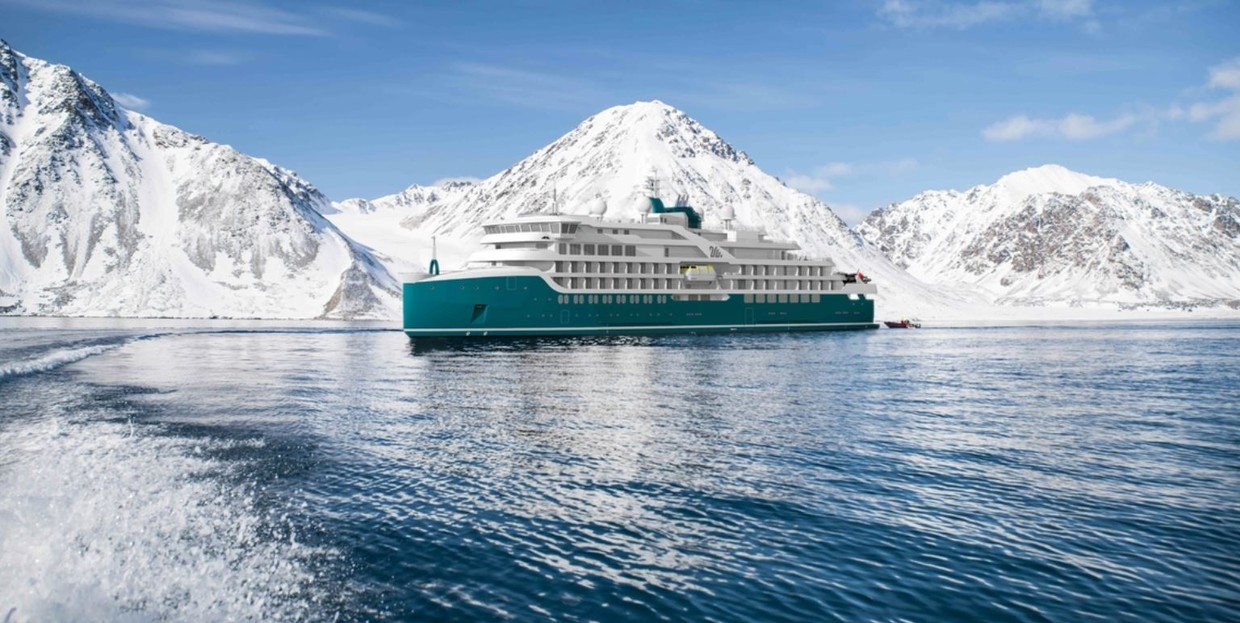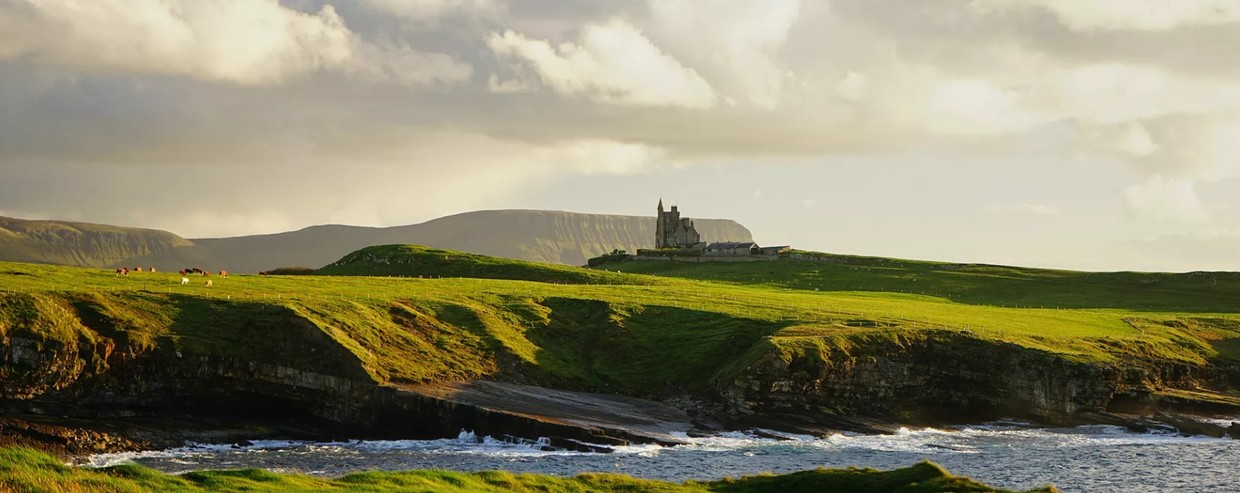from$ 13120 AUD
Note: Current p/p indicative rate. Final price may change due to currency fluctuations.
Vega
Portsmouth to Dublin
Overview
Explore the British and Irish coastlines on this 12-day British Isles - Ireland, Scotland and North Wales cruise. Beginning in the historic naval town of Portsmouth on the English Channel, our boutique expedition ship takes in the best of the Cornish scenery with a trip to the subtropical Scilly Isles, before making its way across the Irish Sea. Here we sail via historic ports in Northern Ireland taking in the mysterious Giant’s Causeway on our way to Scotland to discover age-old standing stones and peek into WWII naval history. As we cruise past highlands and islands, sit back and enjoy the scenery spotting wildlife and birds such as common seals, dolphins and puffins. Our penultimate stop is in North Wales before making our return to the bustling Irish capital of Dublin.
Departures
Cruise Itinerary
Your Anglo-French cruise begins in the UK’s only island city and the world’s oldest dry dock. With easy access by rail and road from airports in London and Southampton, Portsmouth has a long and proud naval heritage. Boarding your boutique ship, you’ll be following in the footsteps of the likes of Admiral Nelson and Henry VIII as you settle in for your voyage. If time permits, the Portsmouth Historic Dockyard is definitely worth a visit. The attraction is home to a wonderful collection of famous historical ships including Lord Nelson’s HMS Victory, Queen Victoria’s HMS Warrior and the only surviving ship from the First World War’s Gallipoli campaign, the HMS M.33. A very fitting way to begin your sea faring adventure.
Cobbled streets, dockside taverns and picturesque harbour give this, Cornwall’s westernmost major town, a piratical feel – the 17th-century Admiral Benbow is said to be the inspiration for the pub in Treasure Island. Along the coast, the castle-topped isle of St Michael’s Mount is a low-tide stroll across a causeway. There’s more: the art deco Jubilee Pool, a seawater swimming lido, grand 19th-century promenade and even grander Penlee gallery devoted to the feted Newlyn school of art.
Reach one of Britain’s most peaceful and beautiful places today. The Isles of Scilly are a low-lying archipelago that lies 45 kilometres off Cornwall. Made up of around 140 rocky islets and five inhabited islands, St Mary’s is the largest, followed by Tresco, Bryher, St Martin’s and St Agnes. Bryher is the last inhabited place before America. On these islands, it seems like another, gentler world: uncrowded, unspoilt, with little or no car traffic. The Gulf Stream provides a mild climate in which flowers and other flora thrive and the Isles’ white-sand beaches and lapping translucent green sea could easily be mistaken for the Caribbean. From the world-famous Tresco Abbey Garden with its 20,000 species from all over the globe and Elizabethan castles to fortresses to Bronze age sites and illuminating lighthouses, the Isles of Scilly boasts several outstanding attractions to be enjoyed.
Amid the headlands and islands of Ireland’s southwest, Bantry is a charming harbour town on Bantry Bay, The town is surrounded by ancient history. Kealkill megalithic stone circle and standing stones, 6th-century Kilnaruane Pillar Stone and 16th-century Carraiganass Castle, all in prime walking territory. More recent is grandiose early 18th-century Bantry House with its Italianate gardens pouring down to the water’s edge. The bay’s Garinish Island is a garden paradise while Seal Island is busy with the friendly mammals.
One of Ireland’s westernmost ports, on Dingle Peninsula, Dingle is a place of craggy cliffs, crashing waves and hidden beaches. The historic fishing village sits on a lake-like estuary, its narrow mouth guarded by its Victorian lighthouse, reachable by a 6 km return coastal walk rich in viewpoints. Other hikes take in everything from mountain ridges to deserted beaches. Plenty of historic sites: medieval Garfinny Bridge over the Garfinny river, 15th-century Gallarus Castle and Reask monastic site, parts dating back to the 6th century.
A harbour city on Ireland’s west coast, Galway has the air of Dublin, centred on 18th-century Eyre Square, with its elegant university and other stylish architecture, whether the playful design of the 1960s cathedral or widespread medieval creations. Head out for a world of walks, many exploring pristine stretches of coast. Galway Atlantaquaria, the National Aquarium of Ireland, sits on the waterfront and boasts more than 1,00 species from the Atlantic and its lakes and rivers.
This mountainous, sparsely populated isle off the northern coast of Ireland is filled with interest. Attractions include the little harbour with its fishing boats, the lighthouse, a cave where Robert the Bruce hid after fleeing Scotland following his defeat by the English, a neolithic settlement site and a puffin-packed RSPB seabird centre. One of Northern Ireland’s most popular destinations, this small town is the gateway to the Causeway Coast with its clifftop walks and divine beaches. Top of the bill is UNESCO-listed Giant’s Causeway with its 40,000 basalt formations. The crashing Atlantic on one side, towering cliffs the other, it is Northern Ireland’s number-one attraction. Decide for yourself if it is the handiwork of prehistoric volcanic activity – or two legendary Celtic giants.
Gateway to Scotland’s Isle of Mull, a wild, wonderful place that has the fairytale feel of a desert island, ringed by beaches, from little white-sand Calgary to the wide-open swathe of Laggan Sands. Tiny Tobermory with its brightly painted houses is the island’s picture book capital, lovely to wander in. There are six castles in splendid spots, two brochs (drystone Iron Age shelters) and Lochbuie, a Bronze Age standing stone circle and magnificent walks taking in mountains, cliffs and shoreline.
One of Britain’s most beautiful stretches of water, between Mull and the Scottish mainland, cruising here is a dream with beaches, cliffs and ancient fortifications always on view. The waterway takes in distant peaks often wreathed in mist. Three lighthouses stand guard and a number of wrecks sit on the seabed. The capital of the most populous island in the Outer Hebrides, Lewis, is a windswept, rugged place. Discover the spellbinding Callanish Stones standing stones. Laid out in a cruciform pattern with a central stone circle, this circle is thought to have been built some 500 years before Stonehenge, in 3,000 BC, making it (along with one on Orkney) the UK’s oldest. A sheltered deep water loch, Loch Ewe in the Scottish Highlands has a big Naval history. During World War II the Home Fleet stayed here, it was a base for Arctic convoys – and a post-war depot for captured German U-boats. NATO still has a base here for submarine servicing. The loch, with low-lying Ewe Island in the middle, is a beauty spot with Inverewe, a Victorian garden rich in exotic plants, sitting on the banks.
Sail south to Stewart Island – the pristine, southernmost inhabited island of the New Zealand archipelago. Located on charmingly-named Halfmoon Bay, the island’s only town is Oban. Come ashore today to explore the settlement as well as the island’s many hiking trails. National Parks cover 85 per cent of the island. Birders will be in their element: around the coast are various types of penguin, sooty shearwaters, mollymawks, and Cape pigeons. Venture into the island’s ferny interior and you might spot bellbirds, tui, fantails and kiwi birds (usually nocturnal, the subspecies on Stewart Island are known to venture forth during the day). If exploration works up your appetite, Oban is a fishing village, so it’s the perfect spot to sample the local catch.
This North Wales seaside resort is famed for sweeping North Shore Beach, yet inland is ripe for wild exploration. Its backdrop is Great Orme, a spectacular 200 m-high headland, all stirring views, clifftop walks and a haven for birdwatching, with direct access from town via a delightful 1902 tramway. Bookending the town is Little Orme, a smaller headland and seabird sanctuary, while offshore the aptly named Puffin Island isa breeding site for puffins between May and June.
Your cruise comes to an end today in Dublin, the Republic of Ireland’s capital. It’s at times gritty and in places, gorgeous – Georgian squares, hidden parks and tree-lined canals. It’s lively, complex, cosmopolitan and eminently walkable. So bid farewell to Vega II and start exploring, if time allows before your flight home. Come full circle and visit The Long Room in the Old Library in stately Trinity College to inspect the Book of Kells, which was produced on Iona. The Long Room itself is much lauded for its beauty – it’s a stunning, two-storey, barrel-vaulted space that houses 200,000 of Trinity’s oldest books and manuscripts. Elsewhere the new Museum of Literature Ireland, the National Museum of Ireland, Christ Church and St Patrick’s Cathedrals, the Guinness Storehouse, Kilmainham Gaol, Glasnevin Cemetery entice visitors – just be sure to stop into a snug somewhere for a pint.
Itineraries are subject to change.
Vega

Vessel Type: Luxury Expedition / Cruise Ship Length: 115 metres Passenger Capacity: 152 Built: 2020-2021-2022 Our brand new ship has been designed to journey to off the beaten path destinations and remote polar regions in style and comfort. The ship incorporates a PC5 ice-strengthened hull combined with extra-large stabilisers to make your journey as smooth as possible. Sophisticated Elegance. We know how important outdoor space is, so our spacious, relaxing public spaces provide wide open, unobstructed views throughout the ship. The destination will always be in view. Your Wellbeing. The safety & happiness of our guests is paramount to our 120-strong crew on board as well as our passionate expedition team who'll be serving up thrilling shore excursions and lasting memories. Cabin Types. Our 76 cabins including 6 suites have all the amenities you will need to feel comfortable including dressing gowns, hairdryers, personal safes and minibars. Our stylish cabins all have desks, a dressing area and comfy seating. En suite bathrooms all feature glass-enclosed rain showers.
Highlights
• Visit the unique subtropical climate of the Scilly Isles, Britain’s most southwesterly point • Take a guided walk over the fascinating basalt columns that make up the Giant’s Causeway in Northern Ireland • Head to the Scottish Highlands and discover Loch Ewe's role in WWII naval history • Feel the spellbinding magic of the UK’s oldest standing stones near Stornoway in the Outer Hebrides • Delve into legendary culture and craic in Ireland’s bustling capital, Dublin
Map



